Advanced Plant Experiments on orbit (APEX-Cambium)
Canada's first study of how trees grow in space
Despite all the money spent on forestry research, relatively little focuses on basic physiology... "We don't understand how trees make wood."

Canadian Space Agency (CSA) Astronaut Bob Thirsk receives instructions from Principal Investigator Rodney Savidge. (Credit: CSA)
During his long-term expedition to the International Space Station (ISS), Canadian Space Agency (CSA) Astronaut Bob Thirsk found himself engaging in the unusual task of bending willow tree stems into loops. No, he was not taking up basket-weaving as a hobby; rather, he was conducting a study known as APEX-Cambium (Advanced Plant EXperiments on Orbit). Funded by the CSA, APEX-Cambium will help determine the role gravity plays in trees forming different kinds of wood.
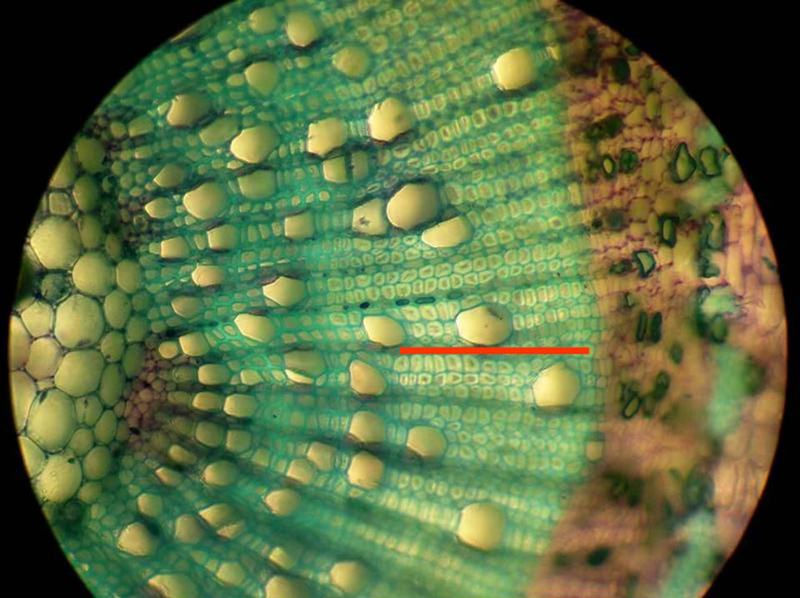
Microscope view of reaction wood fibers following looping. The reaction wood zone is indicated by a red line. (Credit: CSA)
Parts of a tree that are not vertical typically grow one kind of wood on one side and another kind on the other, according to Rodney Savidge, a UNB tree physiologist who is principal investigator of the experiment. This is known as "reaction wood" and the mix of different kinds of this wood in trees influences their suitability for different uses, such as construction or paper. Scientists believe reaction wood is a response to gravity, but they have not been able to prove it.
Savidge's experiment will reveal whether this reaction wood will grow on the upper sides of the tops and bottoms of willow stem loops in the weightless environment of space, as they do on Earth.
He explains, "If we do not get reaction wood in the loops in the expected places in space, it will be an indication that weight on Earth, caused by gravity, is involved."
Cambium is the plant tissue that actually grows to form wood in trees; this remarkable tissue allows tree trunks and branches to increase in girth as the tree grows, so that the tree has the strength to remain standing as it becomes more massive.
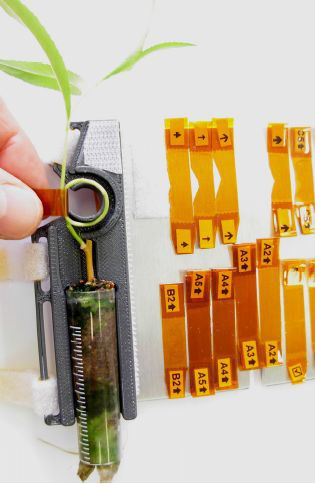
Willow stems undergo testing using a special tool developed by the Canadian Space Agency (CSA). (Credit: CSA)
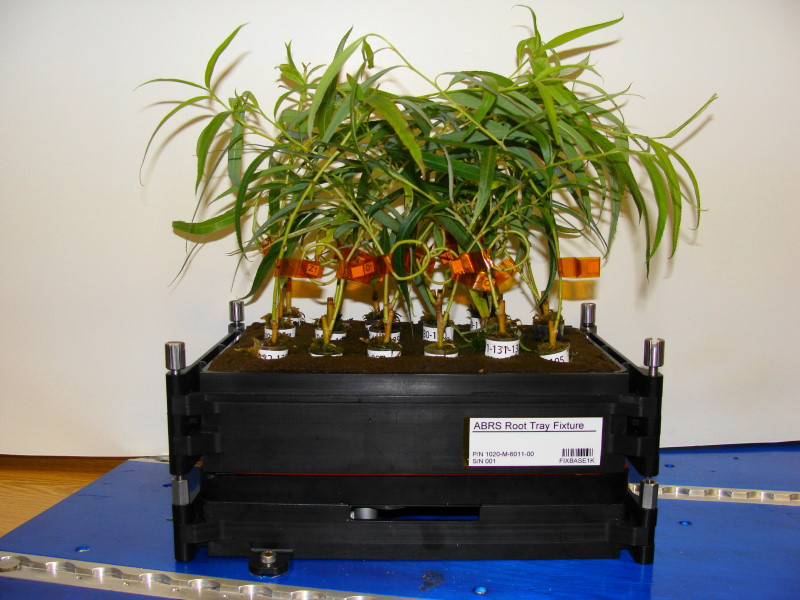
Willow trees undergoing testing in the Advanced Biological Research System (ABRS) incubator. (Credit: CSA)
The looped tree stems, along with unlooped plants that served as controls, were placed in the Advanced Biological Research System (or ABRS), an incubator in which they'll grow for about a month before being returned to Earth. Plant growth occurred in the cambium, a layer of tissue that produces the cells that ultimately become wood and bark (hence the experiment's name, APEX-Cambium).
The space samples will be compared with samples grown in the ground version of the ABRS incubator on Earth.
"The idea is for the only variable to be weight," Savidge says.
The goal of this research is to improve knowledge of fundamental biological processes in trees. Despite all the money spent on forestry research, relatively little focuses on basic physiology, relates Savidge.
"We don't understand how trees make wood."
He added that efforts to accelerate tree growth for commercial uses have increased the amount of reaction wood found in plantation trees.
"This is a big concern. Our research will complement the effort to understand whether we're pushing trees too far, too fast."
This research was one of many reasons why the Expedition 20/21 mission to the ISS, including Dr. Thirsk's role in APEX-Cambium, was essential. Dr. Thirsk was responsible for marking, measuring, growing, and modifying-with the looping tool developed by the CSA in collaboration with Savidge-eighteen willow trees, twelve of which he were looped and another six that were left to grow naturally, as controls. After thirty days, an astronaut harvested the looped and control plants and preserve them in a solution for their journey back to Earth, where Savidge will analyze the results.
The APEX-Cambium project is a joint CSA/the National Aeronautics and Space Administration (NASA) endeavour with NASA providing the ABRS incubator. APEX-Cambium will also carry out a second experiment by U.S. researchers to detect the effects of stressors in space on gene expression in higher plants. Dr. Rodney Savidge, from the UNB leads the Canadian science team with the participation of the CSA. Bionetics, based at NASA's Kennedy Space Center Space Life Sciences Laboratory (SLSL), is the subcontractor to NASA for developing the incubator used in the experiment. Close collaboration with the NASA SLSL over the last 3 years has ensured that the experiment's trees will grow in the best conditions. The CSA provides funding, project management and operational expertise to the team to maximize mission success. APEX-Cambium will also carry out a second experiment by US researchers to detect the effects of stressors in space on gene expression in higher plants.
First, Dr. Savidge places the sapling in a looping tool, secures it, and loops the supple tree stem using the tool as a guide. The plant is then labelled and photographed so that its growth, especially the growth in the area of the loop, can be measured.
About 150 plants were grown in advance for the APEX-Cambium experiment, but just 18 of the best specimens were selected for flight. The plants were grown in a root tube containing nutrients, sphagnum moss, charcoal, foam and charcoal to ensure that their roots stay moist and develop properly.
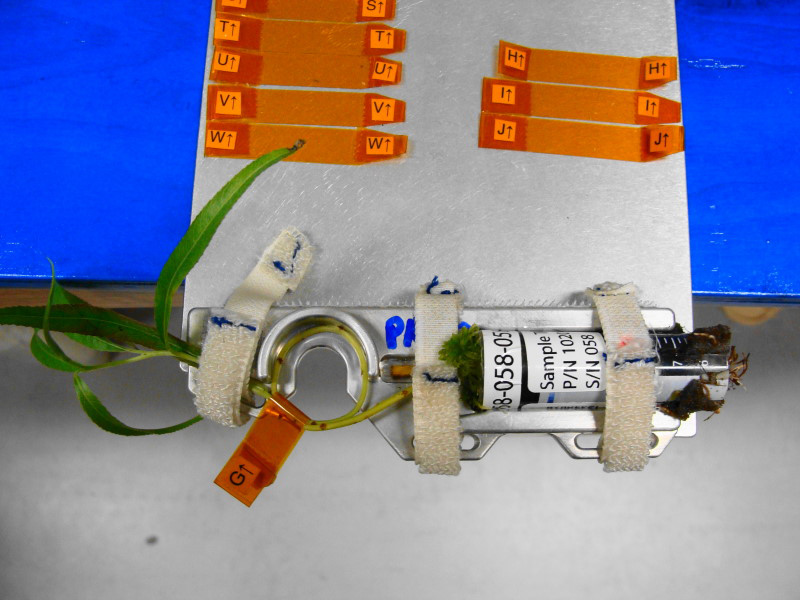
A willow plant undergoes testing in the looping tool. (Credit: CSA)
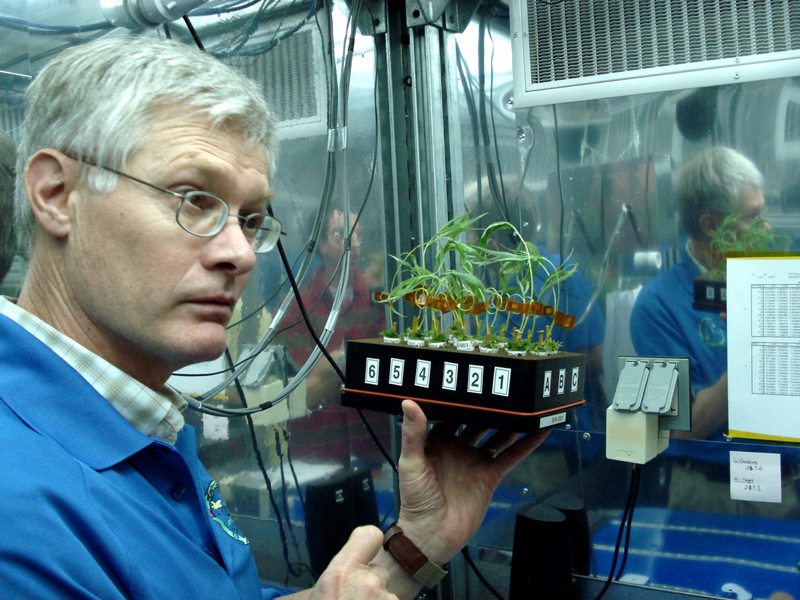
Dr. Rodney Savidge of the University of New Brunswick (UNB) examines some willow specimens. Dr. Savidge is the Principal Investigator of the APEX-Cambium experiment. (Credit: CSA)